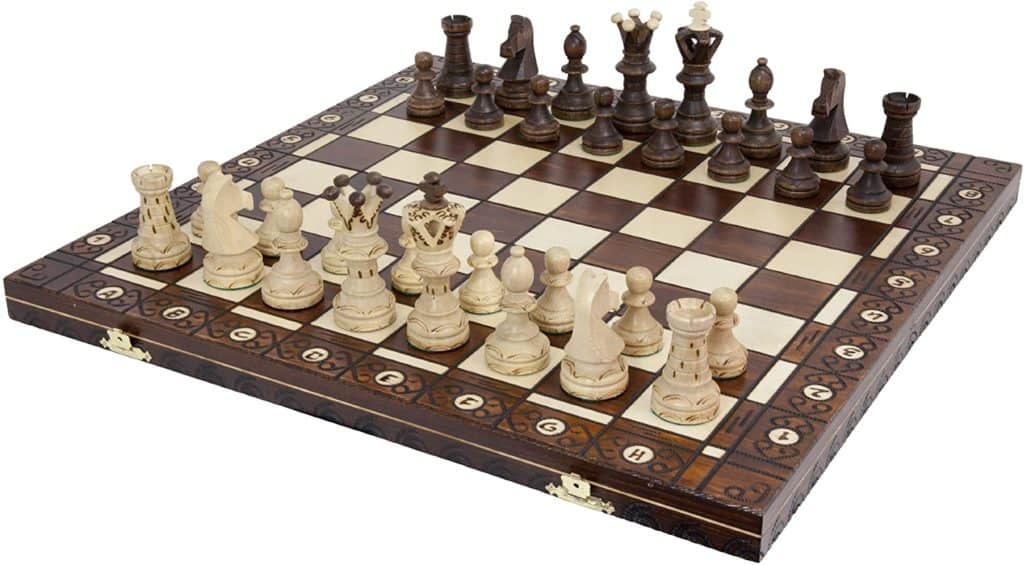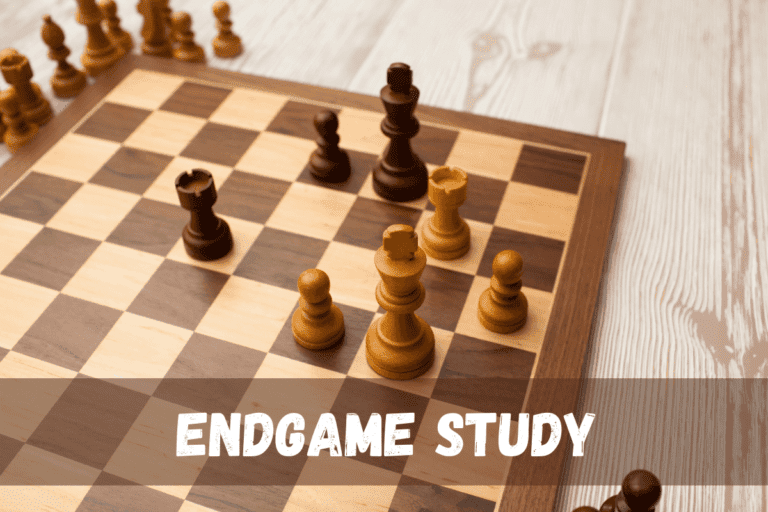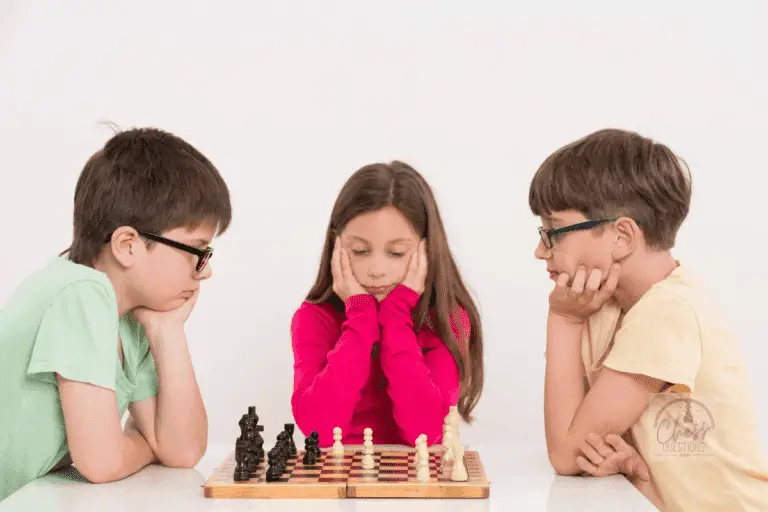Why Do Chess Players Write Down Moves? Because They Have To!
⭐⭐⭐ Take 6 minutes to read and improve your chess game ➡️ : This article was first published on, and is Copyright of Chessquestions.com
You might be wondering why chess players write down their moves on a piece of paper. Why don’t they just remember them? Why not use an app or something to track the game? There are many reasons that chess players do this, but one is because they have to! The rules state that both sides must keep written records of what has happened in the game if played competitively under federation rules.
Chess players write down their moves on a scoresheet using only algebraic notation as a requirement of the FIDE Chess Competition Rules. They’ve also to note the opponent’s moves in a clear and legible manner and sign both scoresheets when the result is known or agreed in the event of a draw.
So without further ado, it is best we find out some more about writing our moves down and about algebraic notation in terms of how to read and write it so we can compete in chess tournaments.- it is quite simple.
Why use algebraic notation written to represent moves in chess?
Algebraic notation is used in a game of chess because it represents each square on the board with a unique letter and number.
How does this help us? Well, the algebraic notation can easily be translated to allow players around the world to compete against one another without confusion.
Each chess piece is allocated an abbreviation and there are some other set notes for special moves and events including time control, within a game. You can view all the abbreviations and special symbols including player notes in my dedicated guide to algebraic notation.
Why is it important for both players write records of what has happened during the game?
Keeping records of what has happened during the game is important for both players because it ensures that there isn’t any cheating or foul play among other things, but primarily as a record of the game so the arbiter can confirm the result.
Why would anyone cheat in a chess competition?
Well, sometimes people might do anything to win and if they get caught out by not keeping accurate records – well, their efforts will be pretty useless!
Thankfully there is not a lot of cheating in this regard with over-the-board play, and notation is simply a way for the arbiter to check the game, the result, and any time disputes.
Cheating in chess is far more common with online chess play where moves are recorded automatically for you
It also provides a record of every move that was made so it can be placed on record and reviewed by the players themselves in analysis, or for the avid chess fan to follow the game at a later date.
Chess Scoresheet
Scoresheets are simple to create on an excel document if you wish but can also be purchased in bulk quite cheaply on Amazon.
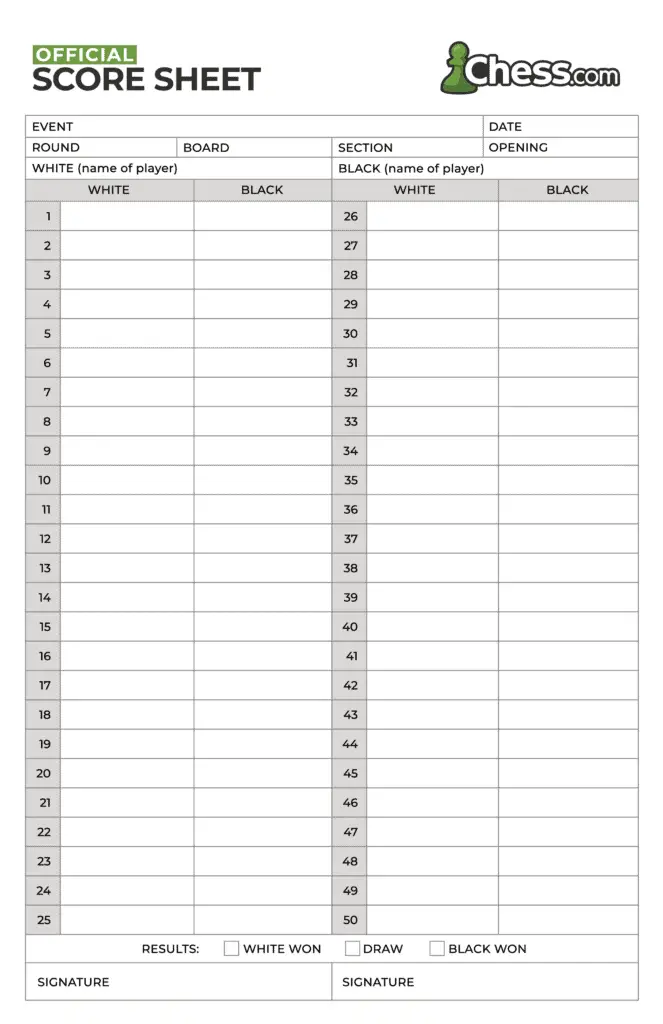
I’d recommend making some up and practicing by playing chess against yourself and recording the moves
Learn Chess Notation
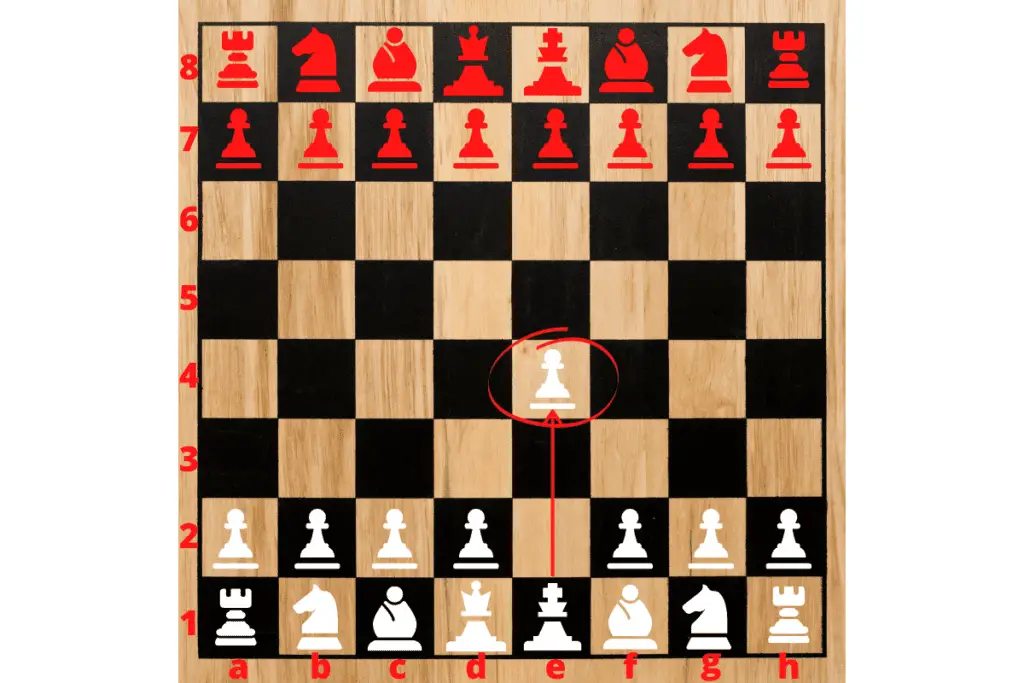
You can not participate in competitive chess matches without completing a scoresheet by recording your moves.
Whether it is a local club, league or national, or international chess match from the US Chess Federation or FIDE events, the recording of all moves within a match is an essential part of the game and provides proof of the outcome of any chess match.
For me personally, it was something that for whatever reason, I was always concerned about. I had seen books with the notation written, both in algebraic and figurine style, and despite looking, I didn’t either understand it or thought that I would never understand it.
Within a few minutes of reading the very basics, I understood perfectly and realized it was nothing to be concerned about, and making notes of the moves was far more simple than I would have imagined.
What it did to my game is the key part. once I understood it, I was able to look back on my games, without having to play them through again and see my mistakes.
If I had a board to hand I would play the moves through to see how bad some of my decisions were, and where I had made great moves.
It helped my chess improve no end, and in no time my rating was on the rise to levels never previously achieved, simply because I was learning so much more and much quicker.
So, do please take a note of the date and of your current ELO rating right now.
Practice writing your chess moves, reading games, and studying your own games retrospectively.
Revisit the first recording of your rating in one month’s time, and I bet it has increased not only quickly but to a level you have never recorded before.
Good luck, and go get those ‘++’s
How does one read and write algebraic notation, and how can you learn more about this type of writing system?
You should be able to recognize the algebraic notation almost immediately because it is quite easy by adding the abbreviation for the piece combined with the chess board notation, which indicates the various squares.
Each move is recorded first with the abbreviation of the chess piece, q=Queen for example, and then the chess board notation number it has moved to.
- If the queen has moved to the c5 square it would be written as – qc5
- If in doing so the queen has captured an enemy piece, an ‘x’ would be added to signify the capture, so qxc5
- Add to this placing the opponent in check then a ‘+’ is added further – now we have qxc5+
- Checkmate has a further addition thus qxc5++ or qxc5#
Both the ‘++’ or ‘#’ is permitted to signal checkmate.
More of these special, and ‘optional’ notation marks are covered in the algebraic notation for chess guide, including the special symbols for castling in chess, en passant captures, and pawn promotion.
Improving your skills at reading and writing down your chess moves makes reading and learning chess theory easier. I guarantee, once you have learned by repetition, your skills and rating will improve.
Chess Board Notation
Here is the basic display of a chessboard with ranks and files marked with the chess board numbers.
Ranks are signified by numbers, files by letters

Each square on the chess board has a unique letter and number combination that represents where you are in the game by using coordinates that refer to rows (vertical) and columns (horizontal).
More information on how to use these in conjunction with notation can be found in my guide to Chess Board numbers and letters guide.
Why are there so many ways to represent a written move in an article or book about chess tactics and strategy
There are not so many ways, only two main ways you will come across for notation of individual moves in chess.
Algebraic notation, the officially recognized method
Each chess piece is identified with an abbreviation of the piece using letters combined with the chessboard numbers along with any special move symbols and/or optional symbols for check, checkmate etc
Figurine notation, online image-based notation
The difference between algebraic notation and figurine notation is that instead of letters, icons depicting each chess piece are used as a visual guide. This is used mostly for online purposes.
It would be also quite tricky to be drawing each piece when playing competitive chess games.
What are some benefits to using algebraic notation when playing chess as opposed to any other way that might be written instead?
Apart from the fact that algebraic notation is universally understood, using a single system can be adapted for different languages, albeit for local use only. Using the different words and names for pieces can be abbreviated easily in the same way.
Writing down all the chess moves in a match will also provide a great way to look back at previous matches and find where you or your opponent may have made mistakes, or played excllently.
Expert chess players will always look back at records, and analyze records of other players’ chess matches in preparation for playing them.
Algebraic notation in other languages
French: R roi (king) D dame (lady/queen) T tour (tower/rook) F fou (jester/bishop) C Cavalier (rider/knight) P pion (pawn)
German: K König (king) D Dame (lady/queen), T Turm (tower/rook) L Läufer (runner/bishop) S Springer (jumper/knight) B Bauer (peasant)
Spanish: R rey (king) D Dama / reina (lady/queen) T torre (tower/rook) A alfil (bishop) C caballo (horse/knight) P péon (foot soldier/pawn)
There is not too much to learn in terms of transposing one letter for another depending on the language, which is why the standard algebraic notation is easy to remember for players from these countries.
Hopefully this article has explained why chess players write down their moves, and the benefits to using it when learning and playing chess. Now take a look at my guides for Chess Board Numbers and Letters and Algebraic Notation guide, and you will be fully armed for your next competitive chess match.
Benefits of Chess Notation
Once you understand chess notation and not only how to write chess moves but how to read them, you will be in a superior position from which to learn chess even more quickly.
Because you will be able to read and understand written chess moves, you will be able to study more books and strategies and past games from grandmasters.
This will expedite your learning and give you the edge over players who have yet to master the skill of reading and studying past games from the scoresheet.
ChessQuestions.com is a participant in the Amazon Services LLC Associates Program, an affiliate advertising program designed to provide a means for sites to earn advertising fees by advertising and linking to Amazon.com, Amazon.co.uk or Amazon.ca
You Want to be a BETTER CHESS PLAYER but Don’t Know Where to Start
Everyone knows that chess is a challenging game. Even the best players in the world continue to learn and improve their skills.
Garry Kasparov’s Masterclass Chess Course is the perfect solution for you. In this course, Garry will teach you his favorite openings and advanced tactics, so that you can develop your instincts and philosophy as a chess player. With over 20 hours of video lessons, this course is guaranteed to make you a stronger player.
Alternatively, you can sign up for a Masterclass with Gary Kasparov for just $16 per month. And get access to all other masterclass courses at the same time, from Movie Making, Music recording, Cooking, and Health & Wellbeing.
Chess Set
This is a superb Wegiel Handmade European Ambassador Chess Set which is stored inside the board itself. Super high quality, it looks fantastic too
- Wooden 21 Inch Beech & Birch Board With Felt Base
- Carved Hornbeam & Sycamore Wood Chess Pieces
- Compartment Inside The Board To Store Each Piece
